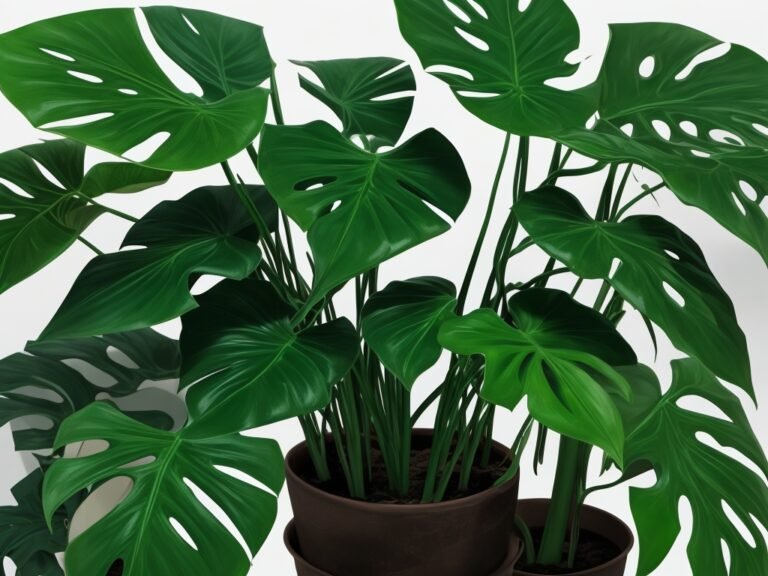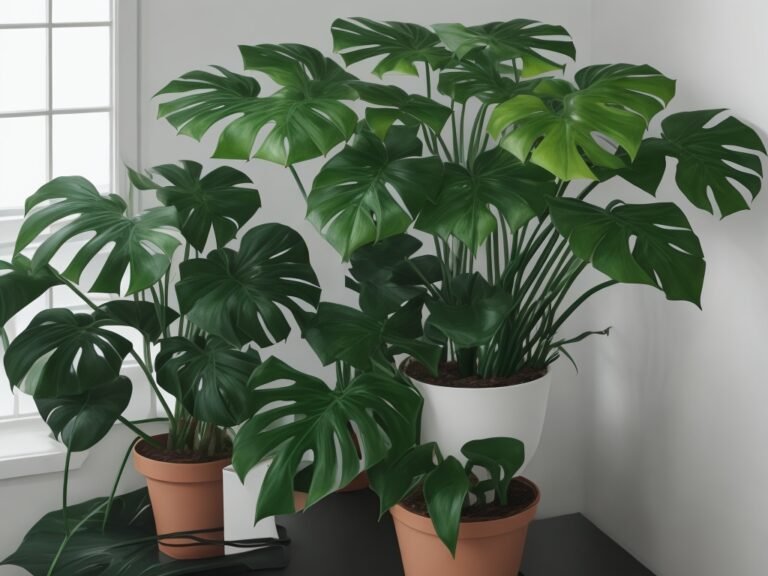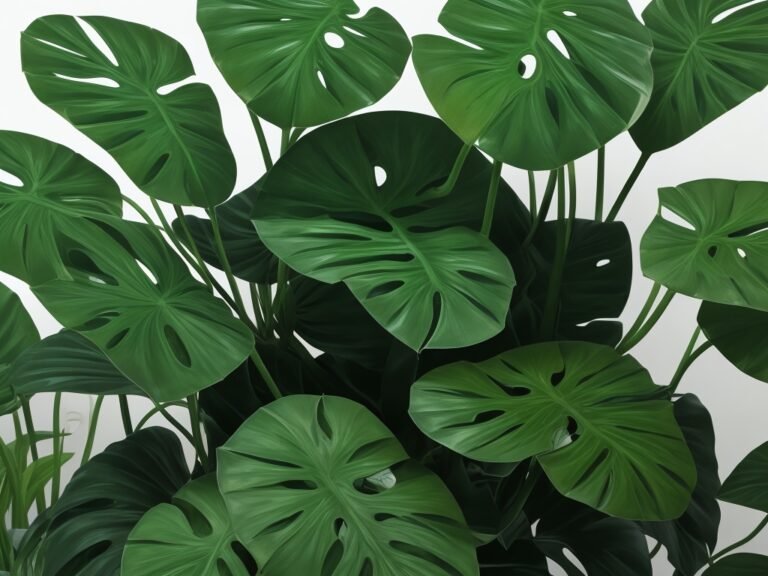What Are The Natural Habitats Of Monstera Plants?
Key Takeaways:
- Monstera plants are native to the tropical rainforests of Central and South America.
- They thrive in low light conditions with high humidity, making them well-suited for indoor environments.
- Monstera plants prefer well-draining soil and benefit from regular watering to keep the soil moist.
- These plants are climbers and will grow larger when provided with a stake or trellis for support.
Have you ever wondered where Monstera plants thrive in their natural habitats?
These popular and trendy plants have an air of mystery surrounding their origins.
But fear not, because I’m here to shed some light on the subject.
In this blog article, we’ll explore the natural habitats of Monstera plants and uncover the secrets to their optimal growth.
From tropical rainforests to specific regions where they thrive, I’ll guide you through the climate, light, soil, and water requirements for these unique and beautiful plants.
Whether you’re a seasoned plant parent or just getting started, get ready to dive into the world of Monstera plants and learn how to create the perfect environment for them to thrive.
| Habitat Type | Climatic Conditions | Geographical Locations |
|---|---|---|
| Tropical Rainforests | Hot and humid | Central and South America |
| Subtropical Forests | Mild to warm | Mexico, Brazil, Costa Rica |
| Epiphytic Habitats | Moist and well-drained | Trees, logs, and rocks |
Understanding the natural habitats of Monstera plants
Monstera plants naturally thrive in tropical rainforests and have specific native regions where they flourish.
Tropical rainforests: A primary natural habitat
Tropical rainforests are the primary natural habitat for Monstera plants.
These lush, humid environments provide the perfect conditions for their growth.
The dense canopy of trees provides filtered, indirect light, while the high humidity levels ensure optimal moisture for their large leaves.
The forest floor offers nutrient-rich soil, allowing Monstera plants to thrive in their natural habitat.
Native regions where Monstera plants thrive
Monstera plants are native to the tropical rainforests of Central and South America.
They thrive in regions such as Mexico, Panama, Brazil, and Costa Rica.
These lush and humid environments provide the ideal conditions for Monstera plants to grow and flourish.
Climate requirements of Monstera plants
Monstera plants thrive in warm temperatures and high humidity levels.
Temperature preferences of Monstera plants
Monstera plants prefer temperatures between 65-80°F (18-27°C). They can tolerate temperatures as low as 50°F (10°C) for short periods, but prolonged exposure to cooler temperatures can stunt their growth.
Avoid exposing them to temperatures below 50°F (10°C) to ensure optimal growth.
Humidity requirements for optimal growth
Monstera plants thrive in high humidity levels, ideally between 60% and 80%.
Adequate moisture in the air helps prevent the leaves from drying out and promotes healthy growth.
Using a humidifier, placing the plant on a tray of water, or misting the leaves can help create the optimal humidity environment.

Light conditions for Monstera plants
Monstera plants thrive in bright, indirect light. Different varieties of Monstera may have slightly different lighting preferences, but they all generally prefer bright, indirect light.
Influence of light on Monstera plant growth
Light plays a significant role in the growth of Monstera plants.
They thrive in bright, indirect light.
Direct sunlight can scorch their leaves, while too little light can stunt growth.
Different varieties have different light preferences, but generally, placing them near a window with filtered light or using artificial grow lights can provide the ideal lighting conditions.
Ideal lighting conditions for different varieties of Monstera plants
Different varieties of Monstera plants have slightly different lighting requirements. While all Monstera plants appreciate bright indirect light, some varieties can tolerate lower light conditions.
Here are the ideal lighting conditions for common Monstera varieties:
- Monstera Deliciosa: This popular variety thrives in bright, indirect light. It can handle some direct sunlight in the morning or late afternoon, but avoid exposing it to intense midday sun.
- Monstera Adansonii: Also known as the Swiss Cheese plant, this variety prefers bright to moderate indirect light. It can tolerate some morning or late afternoon direct sunlight, but not during the hottest hours of the day.
- Monstera Obliqua: This rare and delicate variety requires bright, indirect light. However, it is more sensitive to direct sunlight and may prefer a location with filtered or dappled sunlight.
Overall, Monstera plants appreciate bright, indirect light, but it’s important to consider each variety’s tolerance for direct sunlight. Place them near a window with filtered sunlight or use sheer curtains to provide the right amount of light for optimal growth.

Soil and water requirements for Monstera plants
Monstera plants thrive in well-draining soil and require regular, but not excessive, watering to keep the soil moist.
Optimal soil composition for healthy growth
The optimal soil composition for healthy growth of Monstera plants consists of well-draining and rich organic soil. A mixture of peat moss, perlite, and compost is ideal.
This type of soil retains moisture without becoming waterlogged, while also providing essential nutrients.
Additionally, adding a layer of mulch on top helps to retain moisture and improve soil fertility.
Watering guidelines and frequency
Water Monstera plants when the top inch of soil feels dry to the touch.
Provide a deep watering to thoroughly saturate the root system, allowing any excess water to drain out.
Avoid overwatering, as this can lead to root rot.
Frequency may vary depending on factors such as humidity and light levels, so monitor the soil regularly and adjust accordingly.
Caring for Monstera plants indoors
To care for Monstera plants indoors, find the right location and troubleshoot common problems.
Tips for selecting the right indoor location for Monstera plants
To select the right indoor location for your Monstera plants, consider these tips:
- Find a bright spot: Monstera plants thrive in bright, indirect light. Place them near a window, but avoid direct sunlight as it can scorch the leaves.
- Avoid drafts: Monstera plants prefer stable temperatures, so keep them away from drafts from windows, doors, or HVAC vents.
- Provide adequate space: Monstera plants have large, sprawling leaves. Make sure to give them enough room to spread out and grow without being cramped.
- Consider humidity levels: Monstera plants love humid environments. If your home is dry, place a tray of water near the plant or use a humidifier to increase moisture levels.
- Evaluate temperature: Monstera plants prefer temperatures between 65-85°F (18-29°C. Avoid extreme temperature fluctuations and keep them away from cold drafts.
growth of your Monstera plantscation is crucial to the health and growth of your Monstera plants, so take these factors into consideration when selecting their indoor spot.
Common problems and troubleshooting solutions
Common problems with Monstera plants may include overwatering, which can lead to root rot. To solve this, ensure the soil is well-draining and water only when the top inch of soil is dry.
Yellowing leaves may indicate too much sunlight, so moving the plant to a slightly shadier spot can help.
Brown, crispy leaf tips can be caused by low humidity, so misting the plant regularly or using a humidifier can alleviate this issue. If your Monstera is not growing well, it may benefit from being placed in a warmer location or fertilized with a balanced houseplant fertilizer during the growing season.
Replicating natural habitats for Monstera plants
To replicate the natural habitats for Monstera plants, focus on creating a humid environment and mimicking the right lighting conditions.
Creating a humid environment
To create a humid environment for your Monstera plant, you can use a few simple techniques.
Firstly, mist the leaves regularly with water to increase humidity levels.
Second, place a tray filled with water near the plant to evaporate and add moisture to the air.
Third, group your Monstera with other indoor plants or use a humidifier to maintain a consistently humid atmosphere.
Mimicking the right lighting conditions
To mimic the right lighting conditions for Monstera plants, you’ll want to provide them with bright, indirect light.
Avoid direct sunlight as it can scorch their leaves.
Place them near a window with filtered light or use artificial grow lights.
Regularly rotate the plant to ensure even light distribution.
Frequently Asked Questions about Monstera plant habitats
Can Monstera plants survive in low light conditions?
No, Monstera plants cannot survive in low light conditions.
They are native to tropical rainforests and require bright, indirect sunlight.
Insufficient light can lead to stunted growth, smaller leaves, and the plant becoming leggy.
Place your Monstera in a spot with bright, filtered light to ensure its health and vitality.
Why is humidity important for Monstera plants?
Humidity is important for Monstera plants because it mimics their natural tropical rainforest habitat. Adequate humidity helps keep their leaves healthy, prevents them from drying out, and promotes optimal growth.
It also reduces the risk of pests and diseases.
Can Monstera plants adapt to different climates?
Yes, Monstera plants can adapt to different climates, but they have specific temperature and humidity requirements for optimal growth. They prefer tropical and subtropical environments, so adjusting the conditions indoors or in a greenhouse can help replicate their natural habitat.
Providing the right amount of light, humidity, and temperature is key to ensuring their well-being.
Final Verdict
Understanding the natural habitats of Monstera plants is crucial for their successful cultivation. These plants thrive in tropical rainforests and have native regions where they flourish.
Meeting the climate requirements, including temperature preferences and humidity levels, is essential for optimal growth.
Adequate lighting conditions and proper soil composition are also important factors to consider. When caring for Monstera plants indoors, selecting the right location and troubleshooting common problems are essential.
Replicating their natural habitats by creating a humid environment and mimicking the right lighting conditions can help these plants thrive.
Overall, by understanding their natural habitats, we can provide the best conditions for Monstera plants to flourish and thrive.





